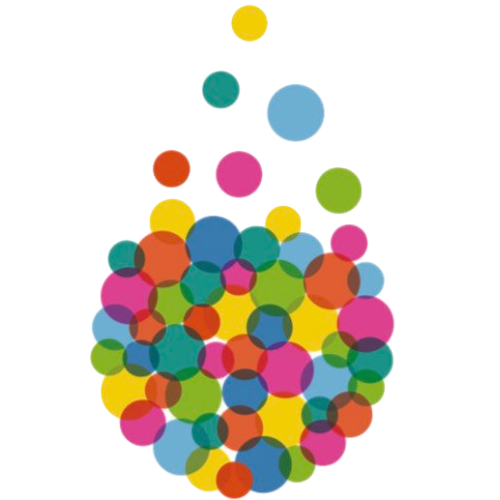Transactional Analysis - what is it and how can it help in community management?
I originally wrote this for the Guild website. Find the original article here.
This is an updated version.
My interest in the theory of communications and how people interact with one another began in my teenage years.
Some of the earliest models and theories that fuelled my fascination included Eric Berne's Transactional Analysis Theory.
Many of the models I studied at college can be applied to community building and community strategy.
In this article, I'll summarise what Transactional Analysis is and how understanding it can help you with community moderation and community management.
What is Transactional Analysis?
Transactional Analysis is a powerful tool for understanding human behaviour, relationships and communication.
Transactional Analysis Theory was developed in the 1950s by Eric Berne, a Canadian psychoanalyst, and is based on Freud's psychoanalytic theory, which states our experiences as children impact our adult lives and personalities.
Berne also felt that our childhood experiences influence our communication style and believed that all human interactions or 'transactions' are shaped by three ego states:
1.Parent - represents the voice of authority
2. Adult - represents rational thought
3. Child - represents emotions and creativity
Berne believed that these three ego states interact with one another in various ways, creating the basis for all human communication and relationships.
Movement between these states can also explain some of the shifts in behaviour we observe in others and are all components of our personality.
How is Transactional Analysis used in everyday life?
Transactional Analysis is frequently used in conflict resolution and counselling.
On a day-to-day basis, it can be applied to work communication and relationships. Or you can apply it to your home environment or friendship group to improve communication.
A little bit of knowledge of Transactional Analysis can be a great way to avoid everyday arguments.
Berne suggested that complementary transactions are the basis of smooth interpersonal communication.
Transactional Analysis theory is a powerful tool for understanding human behaviour, relationships and communication. It can also be applied to community building and community management.
For example, in Adult to Adult exchanges, where there is some stimulus which is correctly interpreted, and a complementary response is given. However, when the transactions or ego states get crossed, then communication can break down.
A classic example of this is where there is a transaction (stimulus) that produces an inappropriate response.
For example, the Adult to Adult stimulus could be a question in the workplace, such as: “Can we please explore why this project is taking longer to complete than expected?”
The appropriate Adult to Adult responses would be: “Great, let's take a look together and figure it out, as I'd love to finish it soon.”
However, if the response is: “Why are you criticising me? You missed a deadline yourself recently! ” this is a Child to Parent response.
There can be many examples of “crossed wires” when we communicate in the workplace or our home life.
This can also happen in our communities, and that's where conflict can arise - and moderators may need to get involved.
Adaptations of Berne's theory also talk about the 'Nurturing Parent' and 'Critical Parent' states, so it's important to understand that not all Parent to Child or Parent to Adult transactions can create misunderstanding or conflict.
Transactional Analysis theory is a powerful tool for understanding human behaviour, relationships and communication. It can be applied to community building and community management.
How can an understanding of Transactional Analysis help in community management and community building?
When it comes to community building and community management, Transactional Analysis (TA) theory can help us understand the dynamics of group interactions or one-to-one conversations.
It can also help us create an environment that fosters healthy communication and relationships.
Here are some ways in which TA can be applied to community building:
1. Recognise the ego states present in your community
To understand the dynamics of your community you may need to recognise the ego states that may be present.
This means identifying people or situations where people tend to take on a Parent role, those who might act as the Adult, and those who may embody the Child.
Understanding ego states within your community can help you identify potential sources of conflict and develop strategies for managing them.
It is important to note that these ego states are not locked into a single person, and they can be fluid over time. Movement between Parent, Child and Adult states can explain some of the shifts in behaviour we observe in others and are all components of a person’s personality.
For example, in a community, a member may feel authoritative about a specific topic and will understandably communicate in an authoritative way (Parent) and rational way (Adult) when that topic is discussed.
But they may also feel less informed about a topic or feel vulnerable when specific conversations are had and take on more of a Child role.
Parent to Child and Child to Parent transactions in your community can also trigger disagreements or disharmony.
2. Create a balanced environment in your community
A healthy community requires balance and respect for all three ego states.
It is important to create an environment that fosters creativity and emotional expression (Child), rational thought and problem-solving (Adult), and a sense of shared values and authority (Parent).
This can be achieved through a variety of strategies, such as encouraging open communication, providing opportunities for learning and growth, and establishing clear guidelines for behaviour and decision-making.
3. Use clear communication
Clear communication is key to building strong relationships within a community.
When communicating with others, it is important to use language that is appropriate to the ego state you are addressing. For example, when communicating with someone in the Parent ego state, it may be helpful to use language that emphasises authority and structure.
When communicating with someone in the Child ego state, it may be more effective to use language that moves that person towards an Adult state and takes any conflict out of the situation.
4. Emphasise mutual respect in your community
Finally, it is always important to emphasise mutual respect within your community.
This means treating others with kindness and empathy and recognising that everyone has something valuable to contribute. Ensuring that you have community guidelines or community rules that are clearly articulated and respected by all is a cornerstone of this.
By creating a culture of mutual respect, you can help build a community that is supportive and inclusive. This is something that we are frequently told that happens in communities on Guild.
We've only just scratched the surface of Transactional Analysis, but an understanding of the theory and how it is applied to community building and community management can help create a healthy, vibrant community that is able to grow and adapt over time.
By recognising the ego states present within your community, creating a balanced environment, using clear communication and emphasising mutual respect, your community can become strong, resilient, and able to meet the needs of all of its members.
In summary
Transactional Analysis, as with all communications models or frameworks has its critics, but it is a useful way to frame a potential context for specific member behaviours and communication styles that may be challenging.
Never use it in isoloation, but do consider how it can help you with your own approach to community management….and even arguments that you may have with your friends or family.
As ever, email me with your thoughts about whether articles like this are helpful or not.
Further reading
I’ve created a community glossary and I also explain key concepts in community strategy, community building and community management.
Here are some connected articles that you may find helpful:
Why Community is a Business Moat
What is a Community Qualified Lead (CQL)? And how does it differ from a MQL or PQL?
What is Community Everywhere / what are Community Ecosystems?
What is Community Led Growth - is it the same as Community Based Marketing (CBM)?
What is Community Market Fit?
What is Minimal Viable Community (MVC)?
What are rituals in community building and why are they so important?
What are the 5 Ps and 1 C of community?
What is Broken Windows Theory and does it apply to Community Management?
What is Community Manager Appreciation Day (CMAD)?
Book a Free Consultation
Want help or support with your community strategy or community building? I’m ready and waiting to hear from you. Book an introductory call to speak to me about your challenges and questions you might have.
Photo by Michelle Goodall ©


